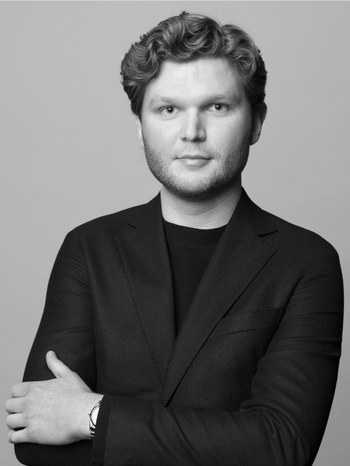Harald Notini
a ceiling lamp model "6170", Arvid Böhlmarks Lampfabrik, Stockholm, 1920s-30s.
Iron, fitted with frosted glass. Total height 78 cm, height of the lantern 52 cm.
Wear, not tested for functionality.
Literature
Illustrated in the 1929 product catalogue.
Designer
Harald Notini was a designer and artistic director at Arvid Böhlmarks Lampfabrik and Pukebergs Glasbruk. When Notini came to Böhlmarks in 1916, he was hired as artistic director both for the Stockholm factory and for the glass production at Pukeberg. With the new artistic director Notini, Böhlmarks was led into a modern, innovative direction that characterized above all the company's range of new, up-to-date fixtures and glass. A large part of Böhlmark's catalogs during the first half of the 20th century consisted of traditional chandeliers and other fixtures in older style imitations. Notini's strength lay in driving the company's design office forward and producing what were considered at the time to be ground-breaking and distinctive fixtures. His personal expression spans between the most elegant Swedish Grace during the 1920s, strictly functionalist fixtures that were presented at the Stockholm Exhibition in 1930, to the Swedish Modern aesthetic, which is highly appreciated today with fixtures in above all brass with details in glass, wood and leather from the 1940s and 50s.
Read more

















































